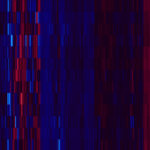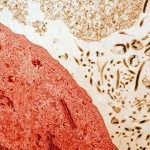Link to Pubmed [PMID] – 35337059
Link to DOI – 10.3390/v14030652
Viruses 2022 Mar; 14(3):
Lassa virus (LASV), an Old World arenavirus, is responsible for hemorrhagic fevers in western Africa. The privileged tropism of LASV for endothelial cells combined with a dysregulated inflammatory response are the main cause of the increase in vascular permeability observed during the disease. Mopeia virus (MOPV) is another arenavirus closely related to LASV but nonpathogenic for non-human primates (NHPs) and has never been described in humans. MOPV is more immunogenic than LASV in NHPs and in vitro in human immune cell models, with more intense type I IFN and adaptive cellular responses. Here, we compared the transcriptomic and proteomic responses of human umbilical vein endothelial cells (HUVECs) to infection with the two viruses to further decipher the mechanisms involved in their differences in immunogenicity and pathogenicity. Both viruses replicated durably and efficiently in HUVECs, but the responses they induced were strikingly different. Modest activation was observed at an early stage of LASV infection and then rapidly shut down. By contrast, MOPV induced a late but more intense response, characterized by the expression of genes and proteins mainly associated with the type I IFN response and antigen processing/presentation. Such a response is consistent with the higher immunogenicity of MOPV relative to LASV, whereas the lack of an innate response induced in HUVECs by LASV is consistent with its uncontrolled systemic dissemination through the vascular endothelium.







